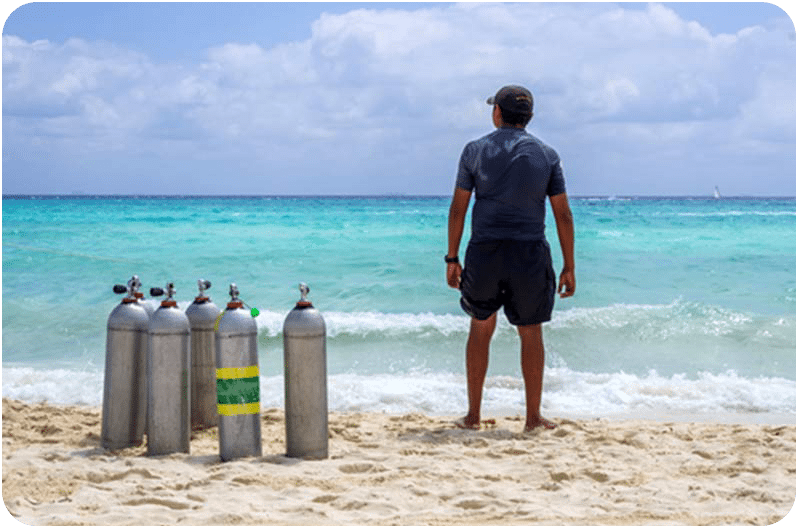Learn how to dive safely with chronic pain.
Scuba diving can be a physically demanding sport. And for many of us, arthritis and chronic pain make it even more challenging. From knee replacements to bad backs to disabling autoimmune diseases like rheumatoid arthritis – divers are not immune to the multitude of conditions that contribute to chronic pain.
For many people with chronic pain, diving is both possible and enjoyable. Now for a short disclaimer, this article is not intended to be medical advice. The strategies that work for one person may not work for another. If your chronic pain is actively flaring, it may be best to rest until the flare is under control. Please consult your doctor before diving to make sure you are medically cleared.
Ten tips that may make diving more enjoyable.
- Try to develop a regular practice of stretching and strength training (doctor supervised if appropriate). Make sure that you are in good physical shape before diving. Yoga is amazing for strength and flexibility, and it shouldn’t put undue stress on your fragile joints if practiced properly.
- If chronic pain affects your back or neck, ask for a smaller tank. The standard size tank used by most resorts and dive shops is 80cf, but many often have smaller tanks of 63cf or even 50cf. Contact your dive shop in advance to ask about a smaller tank. One caveat, if you are doing a deeper dive or a drift dive, and you are unsure about your air consumption rate, it may be disadvantageous to use a smaller volume tank as you may find yourself low on air well before you want to end the dive.
- If getting into your BCD + tank on land is too stressful on your back and joints, consider asking for assistance putting it on while in the water.
- Many people with painful autoimmune diseases also have Raynaud’s syndrome, which is a condition in which the extremities become cold, numb, and painful in response to cold temperatures. Diving with Raynaud’s syndrome can be extremely uncomfortable. If permitted, consider wearing gloves during your dive with the proper approval. Gloves are not permitted while diving in Bonaire, but special permits are available at STINAPA headquarters with a medical note. The medical note from your doctor must be submitted to STINAPA before diving for approval.
- Whether or not you have Raynaud’s syndrome, it is very important to stay warm while diving. Water removes heat from your body at a rate of 25 times faster than air. Wearing a hood while diving can greatly decrease body heat loss, making a noticeable difference in a diver’s comfort level.
- For many people, putting on a wetsuit is a challenging endeavor. The pulling, crouching, and tugging is annoying, and for those with chronic pain, it can be downright painful. One solution that can be employed is the use of a front-zip shortie (long-sleeve) with a full dive skin underneath. This configuration is very easy to put on and does a good job of preventing body heat loss in Bonaire’s tropical waters.
- Most divers employ the flutter kick to propel themselves underwater. If you find that your knees or hips become overly fatigued while kicking, try changing or alternating your kick style. The frog kick can be easier on the knees. And as a bonus, you can more easily avoid kicking up sand using this kick.
- Many serious dive trips include the option of doing 4-5 dives per day, and most divers want to see and do as much as possible. Inflammation from chronic pain tends to cause fatigue, and the exertion from diving can multiply this effect. If you become tired after a dive, rest. There is no shame in sitting out a dive, two dives or even a full day of diving. Give yourself a break when you need it, and don’t let others pressure you into “just one more dive” when you are exhausted and in pain.
- Know your dive plan ahead of time, and don’t be afraid to opt-out if it sounds too challenging. Contact your dive operator ahead of a planned dive to ask about the dive plan and conditions. Will there be a lot of swimming and could there be strong currents? Just say no if the dive exceeds your physical limits.
- Do you find that your weight belt sits uncomfortably on your hips or sacroiliac joints? If so, explore other options. Integrated weights may be a good solution. A good dive professional should be able to help you find a weight placement solution that works well for you.
We hope that these tips will help you on your next dive in Bonaire or wherever you are in the world. Do you have any other special tips that may help our readers with chronic pain?
(Source: Bonaire Insider)












